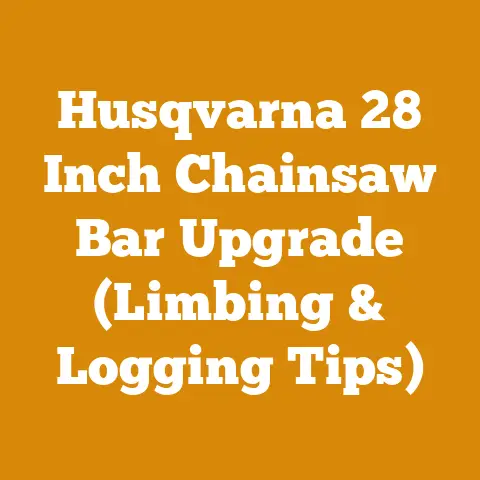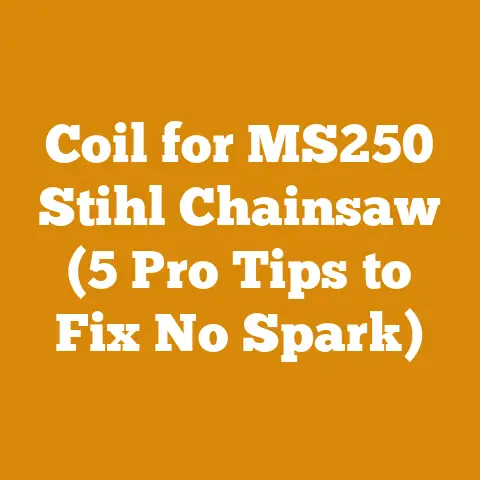Do It Yourself Christmas Crackers (5 Woodcraft Hacks)
Blending styles in woodworking, much like blending flavors in cooking, can elevate a simple project into something truly special. This year, I’m diving into the world of DIY Christmas crackers with a woodcraft twist. Forget the flimsy cardboard tubes and generic plastic trinkets – we’re going for rustic charm and sustainable materials.
But before we get started, let’s talk money. Crafting, even with natural materials, isn’t free. And while the satisfaction of creating something beautiful with your own hands is priceless, understanding the costs involved is crucial for staying within budget and making informed decisions. This article will explore five unique woodcraft hacks for crafting your own Christmas crackers and provide a detailed breakdown of the costs involved, from sourcing wood to purchasing tools.
DIY Christmas Crackers: 5 Woodcraft Hacks & A Cost Breakdown
The beauty of DIY projects lies in their flexibility. You can tailor them to your budget, skill level, and available resources. However, it’s easy for costs to creep up if you don’t plan carefully. I’ll share some insights and data points to help you navigate the costs and create beautiful, personalized Christmas crackers without breaking the bank.
Hack 1: The Rustic Wood Slice Cracker
This cracker utilizes thin wood slices to create a natural, rustic aesthetic. It’s a great option for using up small scraps of wood and adds a touch of woodland charm to your holiday celebrations.
Materials:
- Wood Slices: Thin slices (1/4″ – 1/2″ thick) of various wood species (pine, birch, maple).
- Cardboard Tube: Recycled toilet paper or paper towel tubes.
- Glue: Wood glue or hot glue.
- Twine or Ribbon: For securing the ends.
- Embellishments: Small pinecones, berries, leaves, or dried flowers.
- Cracker Snaps: The essential “bang” element.
- Filler: Small gifts, jokes, or paper hats.
Cost Breakdown:
-
Wood Slices: This is where costs can vary significantly.
- Free (Salvaged Wood): If you have access to fallen branches or scrap wood, you can slice your own. This requires a bandsaw or a miter saw with a thin-kerf blade. The cost here is primarily your time and the electricity to run the saw.
-
Purchased Wood Slices: Pre-cut wood slices are readily available online or at craft stores. A pack of 20 birch wood slices (2-3 inches in diameter) typically costs between $15 and $25, depending on the size and quality.
- Data Point: A quick search on Etsy reveals an average price of $1.00 – $1.50 per wood slice for unfinished birch slices.
- Cardboard Tubes: Essentially free if you recycle them.
- Glue: A bottle of wood glue (8 oz) costs around $5 – $10. Hot glue sticks are relatively inexpensive, costing about $5 for a bag of 50.
- Twine or Ribbon: A spool of jute twine (100 feet) costs around $5 – $8. Ribbon costs vary depending on the material and width but can range from $3 – $10 per roll.
- Embellishments: These can be gathered for free from your yard or purchased at a craft store. A small bag of dried berries or pinecones might cost $5 – $10.
- Cracker Snaps: These are essential for the “bang” and can be purchased online or at party supply stores. A box of 50 cracker snaps typically costs around $10 – $15.
-
Data Point: Amazon lists a box of 50 cracker snaps for around $12.99, making each snap roughly $0.26.
- Filler: This is where you can get creative and personalize your crackers. Small gifts, jokes printed on paper, or inexpensive paper hats can be used. The cost here depends entirely on your choices.
Total Cost per Cracker (Estimated):
- Using Salvaged Wood: $0.50 – $1.00 (primarily for glue, snaps, and filler)
- Using Purchased Wood Slices: $1.50 – $3.00 (including wood slices, glue, snaps, and filler)
Cost Optimization Tips:
- Source your own wood: If you have access to fallen branches or scrap wood, invest the time in slicing your own wood slices. This will significantly reduce your material costs.
- Recycle: Use recycled cardboard tubes and gather natural embellishments from your yard.
- Buy in bulk: Purchase cracker snaps and glue in bulk to save money.
- Personalize the filler: Instead of buying expensive gifts, create personalized jokes or write heartfelt messages.
Personal Anecdote: I remember one year, I was determined to make all my Christmas decorations myself. I spent a weekend gathering fallen branches from a nearby forest and carefully slicing them into thin rounds. It was a labor of love, but the resulting wood slice ornaments and cracker decorations were incredibly special and unique.
Hack 2: The Branch-Wrapped Cracker
This cracker uses small branches to create a rustic and textured surface. It’s a great way to bring the outdoors in and adds a natural, earthy feel to your holiday decorations.
Materials:
- Small Branches: Thin, flexible branches (willow, birch, or dogwood work well).
- Cardboard Tube: Recycled toilet paper or paper towel tubes.
- Glue: Wood glue or hot glue.
- Twine or Ribbon: For securing the ends.
- Cracker Snaps: The essential “bang” element.
- Filler: Small gifts, jokes, or paper hats.
Cost Breakdown:
- Small Branches: These are essentially free if you have access to them. A walk in the woods or your own backyard can provide you with all the branches you need. The cost here is primarily your time spent gathering and preparing the branches.
- Cardboard Tubes: Essentially free if you recycle them.
- Glue: A bottle of wood glue (8 oz) costs around $5 – $10. Hot glue sticks are relatively inexpensive, costing about $5 for a bag of 50.
- Twine or Ribbon: A spool of jute twine (100 feet) costs around $5 – $8. Ribbon costs vary depending on the material and width but can range from $3 – $10 per roll.
- Cracker Snaps: A box of 50 cracker snaps typically costs around $10 – $15.
- Filler: The cost here depends entirely on your choices.
Total Cost per Cracker (Estimated):
- $0.40 – $0.75 (primarily for glue, snaps, twine/ribbon, and filler)
Cost Optimization Tips:
- Gather your own branches: Take a walk in the woods or your own backyard to collect the branches you need.
- Recycle: Use recycled cardboard tubes.
- Buy in bulk: Purchase cracker snaps and glue in bulk to save money.
- Use natural twine: Jute twine is a relatively inexpensive and eco-friendly option for securing the ends of the crackers.
Personal Anecdote: I once created a batch of these branch-wrapped crackers for a winter solstice celebration. I used willow branches gathered from a nearby riverbank and tied them with natural hemp twine. The crackers had a beautiful, organic feel that perfectly complemented the natural setting of the celebration.
Hack 3: The Wooden Bead Cracker
This cracker uses wooden beads to create a textured and decorative surface. It’s a great way to add a touch of elegance and sophistication to your holiday decorations.
Materials:
- Wooden Beads: Various sizes and shapes of wooden beads.
- Cardboard Tube: Recycled toilet paper or paper towel tubes.
- Glue: Wood glue or hot glue.
- Twine or Ribbon: For securing the ends.
- Cracker Snaps: The essential “bang” element.
- Filler: Small gifts, jokes, or paper hats.
Cost Breakdown:
-
Wooden Beads: This is where costs can vary depending on the type and quantity of beads you use.
- Bulk Beads: Buying beads in bulk is generally more cost-effective. A bag of 500 unfinished wooden beads (various sizes) can cost around $20 – $30.
- Specialty Beads: Painted or patterned beads will cost more.
- Data Point: A quick search on Amazon reveals that a pack of 100 painted wooden beads costs around $10 – $15.
- Cardboard Tubes: Essentially free if you recycle them.
- Glue: A bottle of wood glue (8 oz) costs around $5 – $10. Hot glue sticks are relatively inexpensive, costing about $5 for a bag of 50.
- Twine or Ribbon: A spool of jute twine (100 feet) costs around $5 – $8. Ribbon costs vary depending on the material and width but can range from $3 – $10 per roll.
- Cracker Snaps: A box of 50 cracker snaps typically costs around $10 – $15.
- Filler: The cost here depends entirely on your choices.
Total Cost per Cracker (Estimated):
- $1.00 – $2.50 (depending on the type and quantity of beads used)
Cost Optimization Tips:
- Buy beads in bulk: Purchase wooden beads in bulk to save money.
- Use unfinished beads: Unfinished wooden beads are less expensive than painted or patterned beads. You can always paint or stain them yourself if you want to add some color.
- Mix and match: Use a variety of bead sizes and shapes to create a visually interesting surface without using too many expensive beads.
Personal Anecdote: I once created a batch of these beaded crackers for a friend’s wedding. I used unfinished wooden beads and painted them with gold and silver paint to match the wedding colors. The crackers were a beautiful and elegant addition to the reception decorations.
Hack 4: The Carved Wood Cracker
This cracker involves carving a design into a small piece of wood and using it as the centerpiece of the cracker. This requires some woodworking skills and tools but can result in a truly unique and personalized cracker.
Materials:
- Small Piece of Wood: A small piece of softwood (basswood or pine) is ideal for carving.
- Carving Tools: A set of carving knives or a rotary tool with carving bits.
- Cardboard Tube: Recycled toilet paper or paper towel tubes.
- Glue: Wood glue or hot glue.
- Twine or Ribbon: For securing the ends.
- Cracker Snaps: The essential “bang” element.
- Filler: Small gifts, jokes, or paper hats.
Cost Breakdown:
- Small Piece of Wood: A small piece of basswood or pine can be purchased for around $5 – $10.
-
Carving Tools: This is where the initial investment can be significant.
- Carving Knives: A basic set of carving knives can cost around $30 – $50.
- Rotary Tool: A rotary tool with carving bits can cost around $50 – $100.
- Data Point: Dremel offers a variety of rotary tool kits, with prices ranging from $60 to $150 depending on the features and included accessories.
- Cardboard Tubes: Essentially free if you recycle them.
- Glue: A bottle of wood glue (8 oz) costs around $5 – $10. Hot glue sticks are relatively inexpensive, costing about $5 for a bag of 50.
- Twine or Ribbon: A spool of jute twine (100 feet) costs around $5 – $8. Ribbon costs vary depending on the material and width but can range from $3 – $10 per roll.
- Cracker Snaps: A box of 50 cracker snaps typically costs around $10 – $15.
- Filler: The cost here depends entirely on your choices.
Total Cost per Cracker (Estimated):
- $2.00 – $5.00 (depending on the cost of the wood and the complexity of the carving)
Cost Optimization Tips:
- Use scrap wood: If you have any scrap wood lying around, use it for carving.
- Start with simple designs: Begin with simple carving designs to minimize the risk of mistakes and reduce the amount of time required.
- Invest in quality tools: While the initial investment may be higher, quality carving tools will last longer and provide better results.
Personal Anecdote: I remember when I first started wood carving, I was intimidated by the tools and techniques. But I started with simple projects, like carving small wooden animals, and gradually worked my way up to more complex designs. The satisfaction of creating something beautiful with my own hands was incredibly rewarding.
Hack 5: The Laser-Cut Wood Cracker
This cracker utilizes laser-cut wood pieces to create intricate and precise designs. This requires access to a laser cutter, which can be expensive, but the results are stunning.
Materials:
- Thin Wood Sheets: Thin sheets of plywood or balsa wood are ideal for laser cutting.
- Laser Cutter: Access to a laser cutter.
- Cardboard Tube: Recycled toilet paper or paper towel tubes.
- Glue: Wood glue or hot glue.
- Twine or Ribbon: For securing the ends.
- Cracker Snaps: The essential “bang” element.
- Filler: Small gifts, jokes, or paper hats.
Cost Breakdown:
- Thin Wood Sheets: A sheet of 1/8″ plywood (12″ x 24″) can cost around $10 – $15. Balsa wood is generally less expensive.
-
Laser Cutter: This is the most significant cost factor.
- Owning a Laser Cutter: A small desktop laser cutter can cost anywhere from $500 to $2000.
- Using a Maker Space: Many maker spaces offer access to laser cutters for a membership fee or hourly rate.
- Data Point: TechShop, a popular maker space, charges around $50 per month for access to their equipment, including laser cutters.
- Cardboard Tubes: Essentially free if you recycle them.
- Glue: A bottle of wood glue (8 oz) costs around $5 – $10. Hot glue sticks are relatively inexpensive, costing about $5 for a bag of 50.
- Twine or Ribbon: A spool of jute twine (100 feet) costs around $5 – $8. Ribbon costs vary depending on the material and width but can range from $3 – $10 per roll.
- Cracker Snaps: A box of 50 cracker snaps typically costs around $10 – $15.
- Filler: The cost here depends entirely on your choices.
Total Cost per Cracker (Estimated):
- $3.00 – $8.00 (depending on the cost of the wood and the laser cutting time)
Cost Optimization Tips:
- Use a maker space: If you don’t own a laser cutter, consider using a maker space to access one.
- Optimize your designs: Design your laser-cut pieces to minimize material waste and cutting time.
- Use inexpensive wood: Balsa wood is a less expensive option than plywood.
Personal Anecdote: I once used a laser cutter to create intricate snowflake designs for Christmas ornaments. The precision and detail that the laser cutter allowed were incredible, and the resulting ornaments were truly stunning.
General Cost Considerations
Regardless of which hack you choose, there are some general cost considerations to keep in mind:
- Bulk Buying: Buying materials in bulk is almost always cheaper than buying them individually. This is especially true for items like glue, twine, and cracker snaps.
- Time is Money: Don’t forget to factor in the value of your time. DIY projects can be time-consuming, so consider whether the cost savings are worth the effort.
- Tool Costs: If you don’t already have the necessary tools, you’ll need to factor in the cost of purchasing them. However, remember that these tools can be used for other projects as well.
- Waste: Be mindful of material waste. Plan your projects carefully to minimize waste and save money.
- Shipping Costs: If you’re buying materials online, factor in the cost of shipping.
Conclusion
Crafting your own Christmas crackers with a woodcraft twist is a rewarding and creative way to add a personal touch to your holiday celebrations. By carefully planning your projects and considering the costs involved, you can create beautiful and unique crackers without breaking the bank. Remember to source your materials wisely, buy in bulk when possible, and don’t be afraid to get creative with your designs.
Actionable Takeaways:
- Start planning early: This will give you time to source materials and compare prices.
- Set a budget: Determine how much you’re willing to spend on each cracker and stick to it.
- Get creative: Don’t be afraid to experiment with different materials and designs.
- Have fun! Crafting should be enjoyable, so relax and let your creativity flow.
I hope this guide has been helpful in planning your own DIY Christmas cracker projects. Happy crafting and happy holidays!






